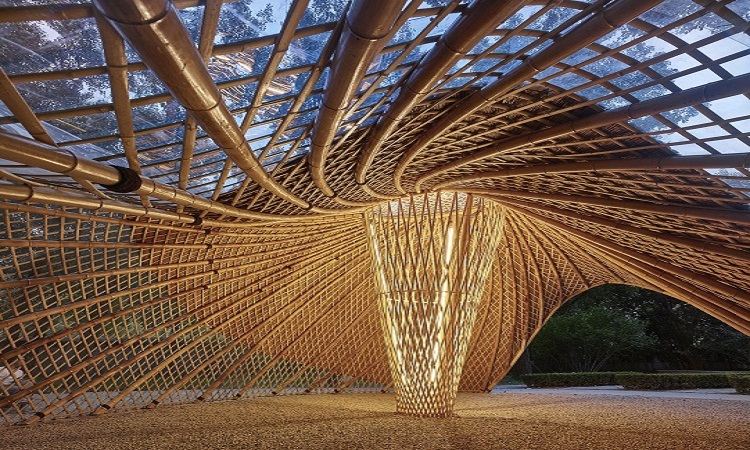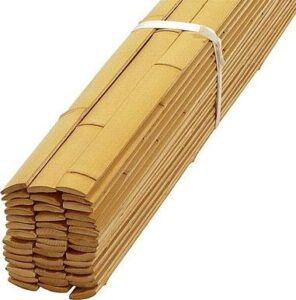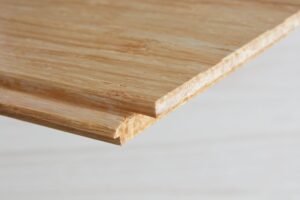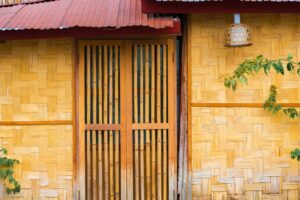Bamboo sustainability as a construction material or building material is paramount since it is a promising natural composite material. The use of bamboo in the construction industry in recent times has attracted increasing interest for its promising applications in sustainable construction works. The assessment of the sustainability of many materials of value such as bamboo is very critical as it will provide insight into the availability and the continuous use of such material.
After global warming and sustainability issues emerged, bamboo as building or construction materials is widely discussed and reviewed. Some architects and builders nowadays tend to choose bamboo for building material or construction material. Good-quality woods for construction are hardly found nowadays due to deforestation. Wood also takes a long time to regrow and is ready to use as construction materials or building material. Meanwhile, bamboo can be reaped in a short time, which is between 3-5 years. When planting, bamboo additionally delivers oxygen into the air, an ability that can’t be performed by industrial materials like steel, plastic, and concrete. Hence, bamboo has been broadly known as sustainable building materials and is being utilized in architectural and construction works. Every one of them is clarified below.
The Bamboo used in Architecture
In bamboo architecture, bamboo, as the major architectural structure, plays a vital role in the load holding of buildings. Bamboo has strong adaptability in thickness and strength and can make different combination adjustments accordingly based on the architectural structure to satisfy different structural performance requirements. On the other hand, the technical needs of bamboo buildings are generally low and can easily be integrated into local architectural structures, for example, the integration of bamboo with soil, concrete, and glue, etc can help increase the strength of the structure. The stiffness, strength, and stability of nodes are mainly based on the joint strength between structural components of the building. Therefore, the expanding improvement of connection structure has brought more contributions to the diversification of bamboo architecture.
The Bamboo used as Building “Skin”
The outer walls of the building can be called “Skin”, which can reflect the culture of the building or structure. The variety in bamboo utilized and its integration with other materials provides more opportunities for the diversification of building “skin” and the improvement of architectural aesthetic. Generally, the use of bamboo as building skins can be divided into 3 types:
- Single Skin: A “bamboo skin” formed by just a single material through several combinations, which is a generally low-level utilization of one kind of bamboo material in building skins. It is of simple production technology with low-cost and good ventilation and sunlight avoidance. Besides, it is helpful for keeping the architectural features with local architectures, however, it has shortcomings such as poor lighting conditions and privacy. Therefore, it is generally used in outer space and the enclosure of less important space.
- Multilayer Skin: Juxtaposed and composed by at least two or more materials, which is a typical design procedure of utilizing complementation of material properties, and can effectively overcome defects of single bamboo material. The juxtaposition of bamboo and glass is a typical 1909 combination form. The bamboo can filter outside inference and glass can block the sound and heat that bamboo cannot filter. The exchange between indoor and outdoor environments occurs from bamboo curtains open and close, creating breathable skin.
- Composite Skin: Created by blending at least two or more materials, which breakthroughs their inherent properties and makes the third kind of skin. In general, new skin incorporates the benefits of composite materials, e.g., the composition of bamboo and rammed earth walls can both effectively reduce the weight of rammed earth walls and increase the force bearing capacity along the radial direction of bamboo.
The Bamboo used as Building Decoration
Building decoration or ornamentation can be partitioned into the architectural interior and exterior decoration. Building internal decoration should fully consider the natural characteristics of bamboo materials. The bamboo material’s surface is smooth, lightweight, and flexible, with natural & gentle color, clear and beautiful texture. Bamboo decoration should make full utilization of the sense of reality, color, surface gloss & texture to reflect the nature of bamboo materials.
The primary design shades of bamboo materials incorporate bamboo green, tabasheer, and carbonization. In addition, bamboo can easily be bent, making it ideal for manufacturing all kinds of beautiful furniture. Besides building skins, the external decoration of the building also includes virescence surrounding the building.
The greening impact of bamboo on buildings can present in numerous forms, which can be classified into three primary classifications: clump, row, and tract. Bamboo grove in clump shape is concise and clear, pure and fresh, which is suitable for ornament and decoration to improve the taste of a building; bamboo grow in row shape is usually used in boundary space. Other than the part of the design, it also has the function of blocking and shielding; to foil the environmental atmosphere, bamboo grove in tracts can generally be found in open territory.
The Bamboo used as Laminated Sheets and Planks
Bamboo can be cut & laminated into sheets & planks. This procedure includes cutting stalks into thin strips, planing them flat, and drying the strips; they are then glued, pressed, and finished. Since quite a while ago utilized in China and Japan, entrepreneurs started developing and selling laminated bamboo flooring in the west during the mid-1990s; products produced using bamboo laminate, including flooring, cabinetry, furniture, and even decorations, are currently surging in popularity, transitioning from the storage market to standard suppliers like Home Depot. The quality of bamboo laminate varies among producers and differs according to the maturity of the plant from which it was reaped.
The Bamboo used in Foundation
Even though their short life consideration utilizes of bamboo is made as a foundation or supporting posts in case of houses built on raised platforms. The different types of foundations constructed with bamboo are, bamboo which is in direct contact with the ground surface, bamboo fixed to rock or performed concrete footings, composite bamboo or concrete columns & bamboo piles.

The Bamboo used in Floor
Bamboo has been utilized as an option for flooring because of its physical similarities to true hardwoods. Bamboo floor producers and sellers encourage its durability, strength, its eco-friendliness & its natural resistance to insects and moisture. The hardness of conventional bamboo flooring varies from 1180 to around 1380, while newer producers’ techniques consisting of strand woven bamboo flooring vary from 3000 to over 5000 using the Janka hardness test. The various types used are, small bamboo culms, split bamboo, and flattened bamboo.
The Bamboo used in Wall
The most comprehensive utilization of bamboo in construction is for the walls & partitions. The major components, the posts & beams, generally constitute part or structural framework. They are to withstand the self-weight of buildings or structures & loads imposed by the occupants and the atmosphere. An infill among framing members is necessary to complete the wall.
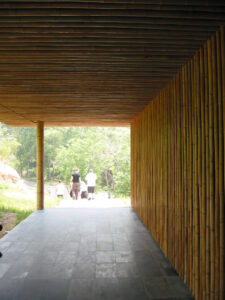
The Bamboo used in Roof
The roof provides defense against extremes of weather including rain, sun, and wind, and provides shelter, clear and usable space beneath the canopy. The structure of bamboo of a roof can consist of purlins, rafters & trusses. The different forms include bamboo purlins and beams, supported on perimeter posts corrugated sheets made out of bamboo, and a layer of bitumen is sandwiched between two mats of bamboo and plastered bamboo.
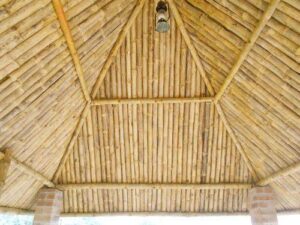
The Bamboo used in Scaffolding
Bamboo material is environmentally friendly and low-cost. It has been extensively utilized in the construction of new buildings or structures, renovation, repair works, slope maintenance, and neon signage works. Most of the construction operations or stages need the utilization of scaffolding & material is an important factor, which affects the competitiveness as well as its overall investment. Because of the favorable relationship between load-bearing capacity and weight, bamboo can be used for the construction of safe scaffoldings even for a very tall building. Only lashed joints are used. The cane expansion is done by lashing the cane ends together with different ties. The ties are laid out in such a way that forces acting vertically downwards wedges the nodes in the lashing.
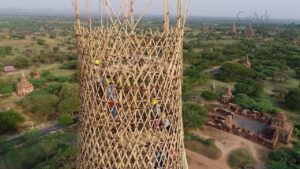
The Bamboo used in Doors and Windows
Bamboo replaces timber frames properly to work. Mat shutters fixed to bamboo frame bamboo boards fixed to the frame which wall can be utilized as a door. A small frame to the top of the wall can serve as windows.

